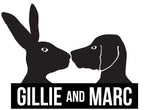New rhino habitat at San Antonio Zoo offers expanded interactive environment
Zoo officials have set the formal opening for the exhibit at 9 a.m. Saturday for members. The first 500 annual pass holders will receive a rhino mold-a-rama figure. General admission opens at 10 a.m.
Animals in the different habitats that make up The Savanna will be able to roam freely across the grasslands. Zebras already have peered at the rhino habitat through gates underneath the deck. Other animals who also live on the African savannah will be introduced in the months to come.
At the time the plans for the new habitat were announced last summer, rhino advocates were pleased.
“It will be a very rich environment for those animals with lots of stimulation,” said Susie Ellis, executive director of the International Rhino Foundation. “It’s much like the wild.”
At the entrance to the exhibit is the striking 17-foot-tall bronze sculpture of endangered northern white rhinos brought in late last year from New York. Created by artists Gillie and Marc Schattner, it’s named “The Last Three” in honor of the last three living northern white rhinos.
Sudan, the last male and one of the models for sculpture, died last March at the age of 45. His daughter and granddaughter are the last living northern white rhinos; they are the other two in the artwork. Unless there’s a miracle development with in vitro fertilization, their species will go extinct when they die.
“Rhino populations are dwindling worldwide due to habitat destruction and poaching,” said Tim Morrow, the San Antonio Zoo’s president and CEO. “Future rhino births will carry on a decades-long tradition of successes in San Antonio that will greatly contribute to the association of zoos and aquarium special survival plan for this species.”
In 1972, the San Antonio Zoo was the first facility in the nation to have a successful birth of a white rhino.
Morrow said the $1 million rhino habitat project was a year in the making. He said the habitat is part of the zoo's mission to have a new or upgraded exhibit each year.
“People will see something different every time they come,” Morrow said.
Zoo officials said the availability of the two young females last month accelerated the renovation plan.
“We had a window and we had to take it,” said Jonathan Reding, director of mammals. “If we waited too long they would go some where else.”
In August, when the renovations began, the zoo’s lone southern white rhino, 21-year old Kuto, was relocated to Natural Bridge Wildlife Park, where zoo keepers said he has found a girlfriend. Kuto will stay there, officials said.
Morrow said he and Reding penned the design for the exhibit on a napkin while waiting for a flight from the Dallas Fort Worth Airport.
Sol Studio Architects developed a blueprint from the sketch.
The huge rhino sculpture is linked to an augmented reality app that allows viewers to protect and adopt the Northern white rhinos.
After downloading the app, visitors will see the likeness of rhinos wandering within the area of the sculpture. More than 75 percent of the app’s proceeds will benefit the Ol Pejeta Conservancy in Kenya.


